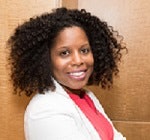Global scientific competitiveness of the United States depends on the nation’s ability to sustain and grow the science, technology, engineering and mathematics (STEM) workforce.
 Dr. Frances Carter-Johnson
Dr. Frances Carter-JohnsonAn important approach to this goal is ensuring that groups historically underrepresented (HU) in STEM fields play larger roles that reflect their growth and strengthening influence in society. In this regard, all higher learning institutions, including those established especially for the education and training of minorities, are relevant.
At present, historically Black colleges and universities (HBCUs) enroll more than 300,000 students nationwide. Defined as institutions established before 1964 with the primary purpose of educating African-Americans, HBCUs were the only option for many African Americans seeking higher education. HBCUs have long served as institutions of choice for many high-performing HU students, especially those seeking research training in preparation for graduate STEM degrees.
As reported by the National Science Foundation, STEM Ph.D.-holders from underrepresented groups primarily earn their bachelor’s degrees from HBCUs. Governmental granting agencies and research publications on the topic are rife with calls to identify high-impact practices that will further diversify the STEM workforce.
 Dr. Tasha Inniss
Dr. Tasha InnissAccording to data from a recent NIH report, the number of African-Americans enrolled in STEM Ph.D. programs grew from 587 in 1985 to 2,373 in 2014. At first glance, this looks like a large increase, but it only represents a proportional change from 2.4 percent to 7.4 percent. The fact that the majority of STEM Ph.D.-holders begin their scientific training at HBCUs points to the critical education occurring in these institutions.
In 2008, the American Association of Colleges and Universities reported the top 10 high-impact education practices that are beneficial to students of all backgrounds. In this report, the high-impact practice of undergraduate research is probably the most closely associated with undergraduate STEM training.
Many may be surprised about the presence of a robust undergraduate research culture at HBCUs. At many of these institutions, there were and are intellectual giants of the ilk of Henry C. McBay, a chemistry professor who in his 50 years at Morehouse College trained more than 50 students who earned chemistry Ph.D.s.
 Dr. Mark E. Lee
Dr. Mark E. LeeSimilarly, Spelman College mathematics professors Etta Falconer and Sylvia Bozeman were recognized by the American Association for the Advancement of Science for their contributions to the production of underrepresented female Ph.D. earners in the mathematical sciences. It is worth noting that Falconer mentored Bozeman early in her career. The McBay-Falconer Effect is possible when institutions establish programming that provides the training opportunities these giants of STEM education provided.
Dr. Frances Carter-Johnson is a National Science Foundation data scientist. Dr. Tasha Inniss is the INFORMS Director of Education and Industry Outreach and Dr. Mark E. Lee is on the science faculty at Spelman College. This material is based upon work supported by Independent Research and Development at the National Science Foundation. Any opinion, findings, and conclusions or recommendations expressed in this material are those of the author(s) and do not necessarily reflect the views of the National Science Foundation.



















